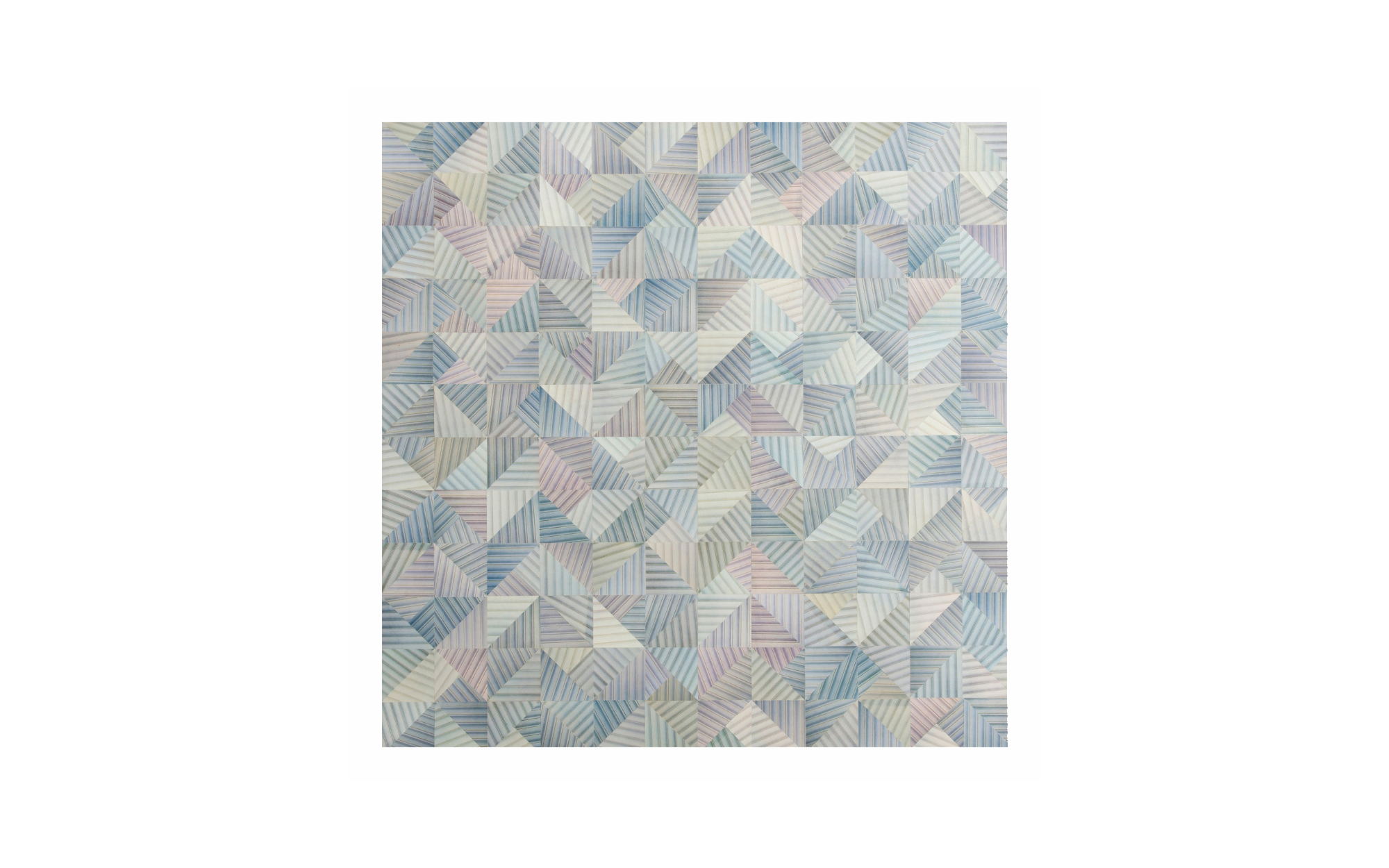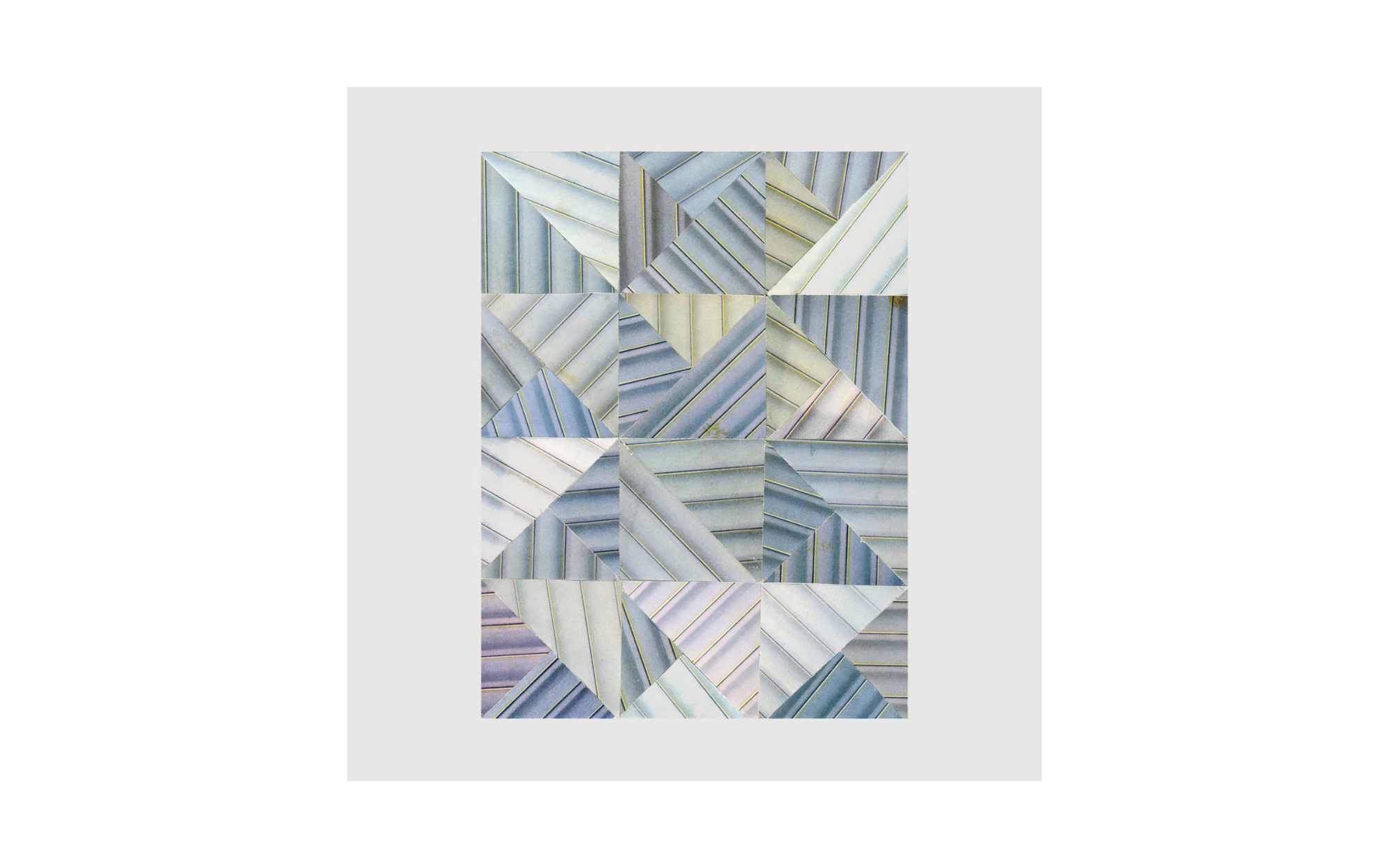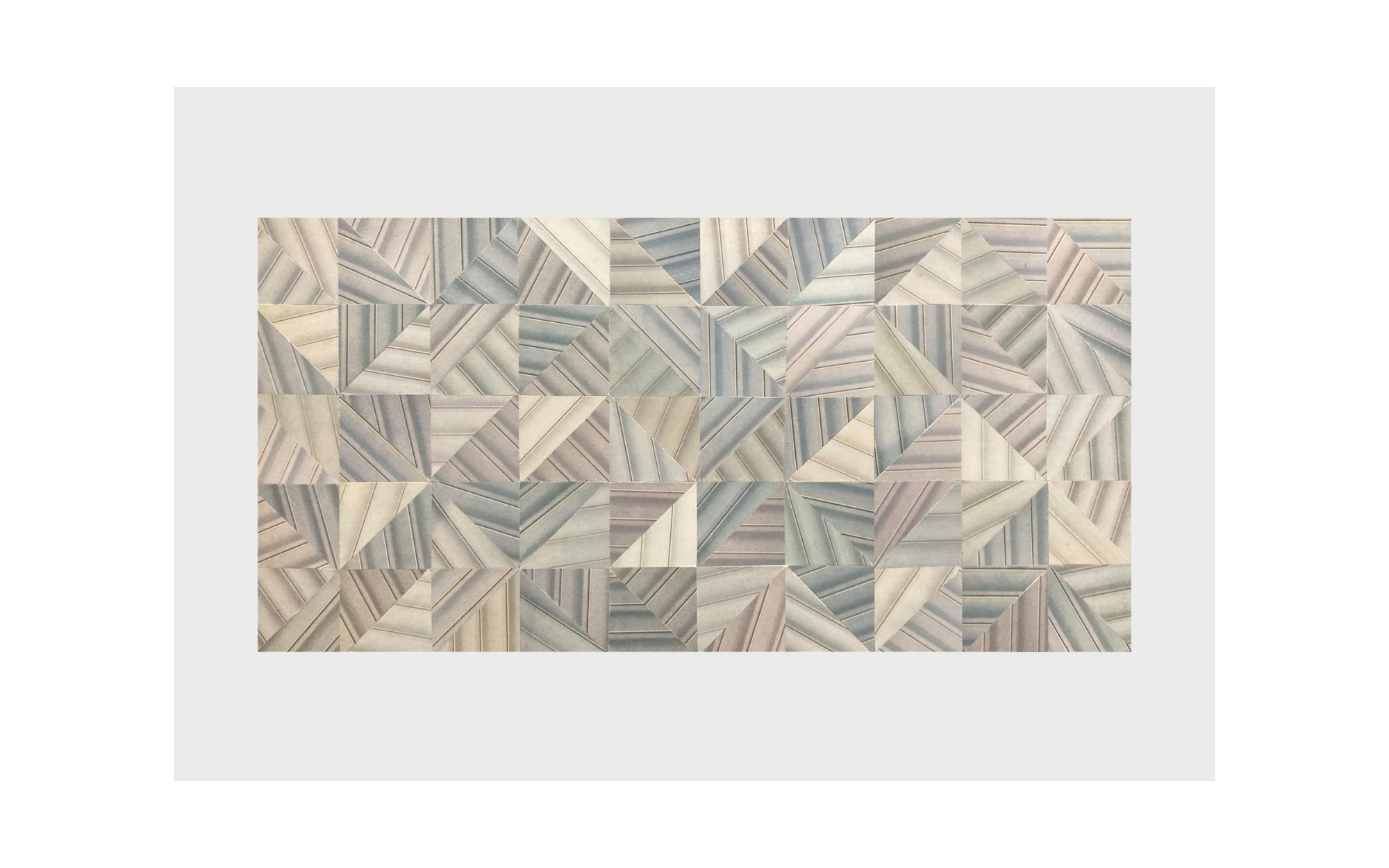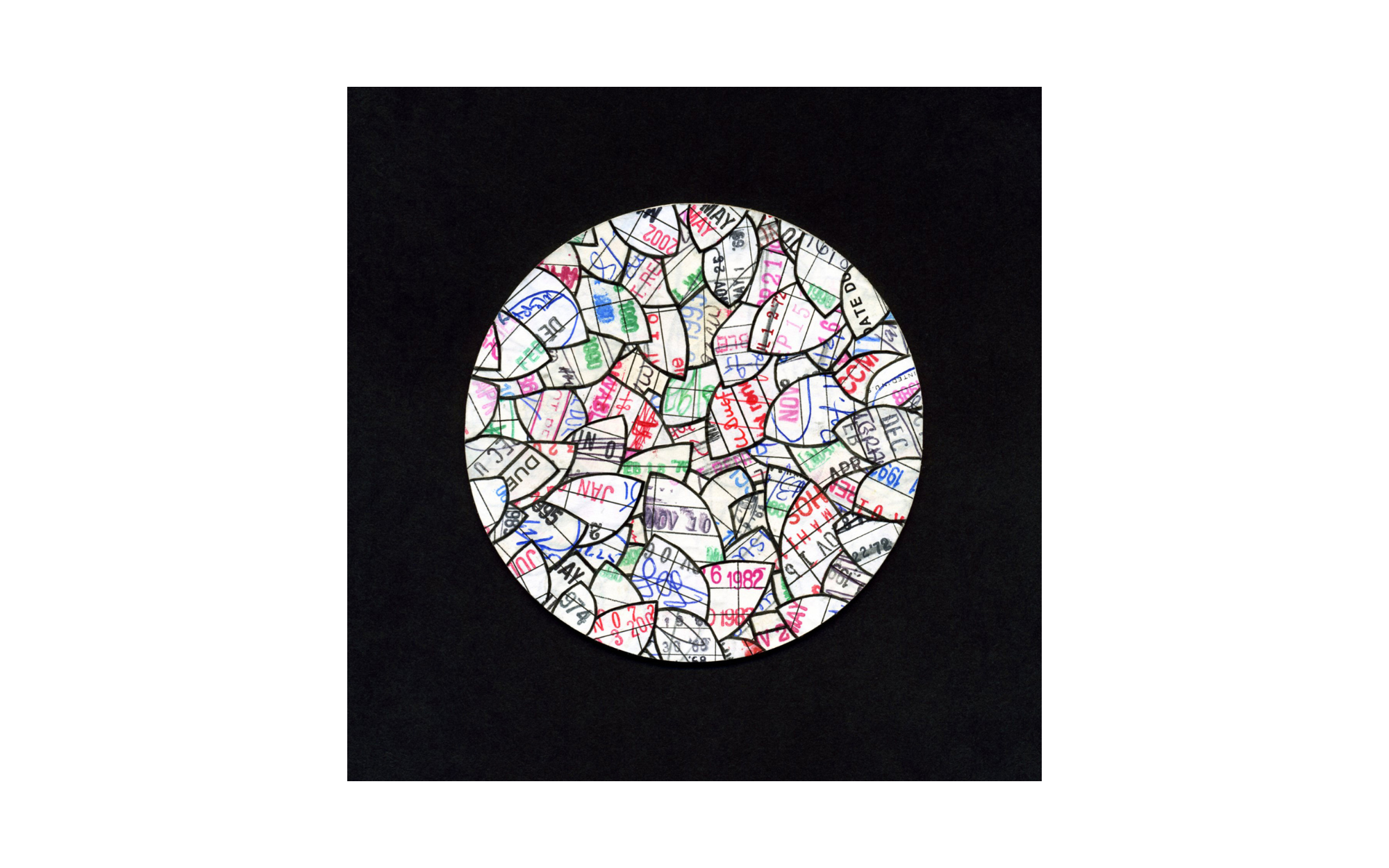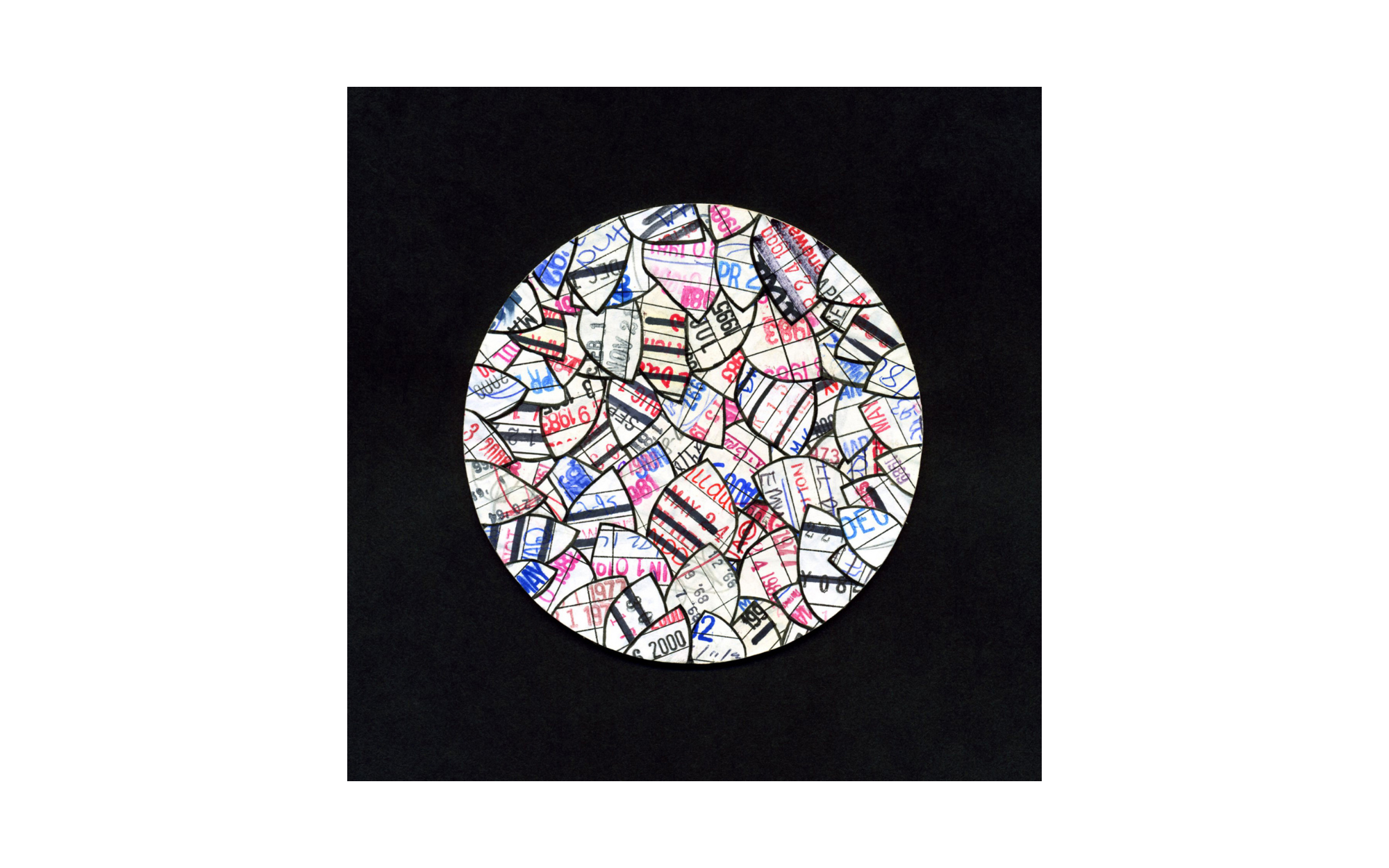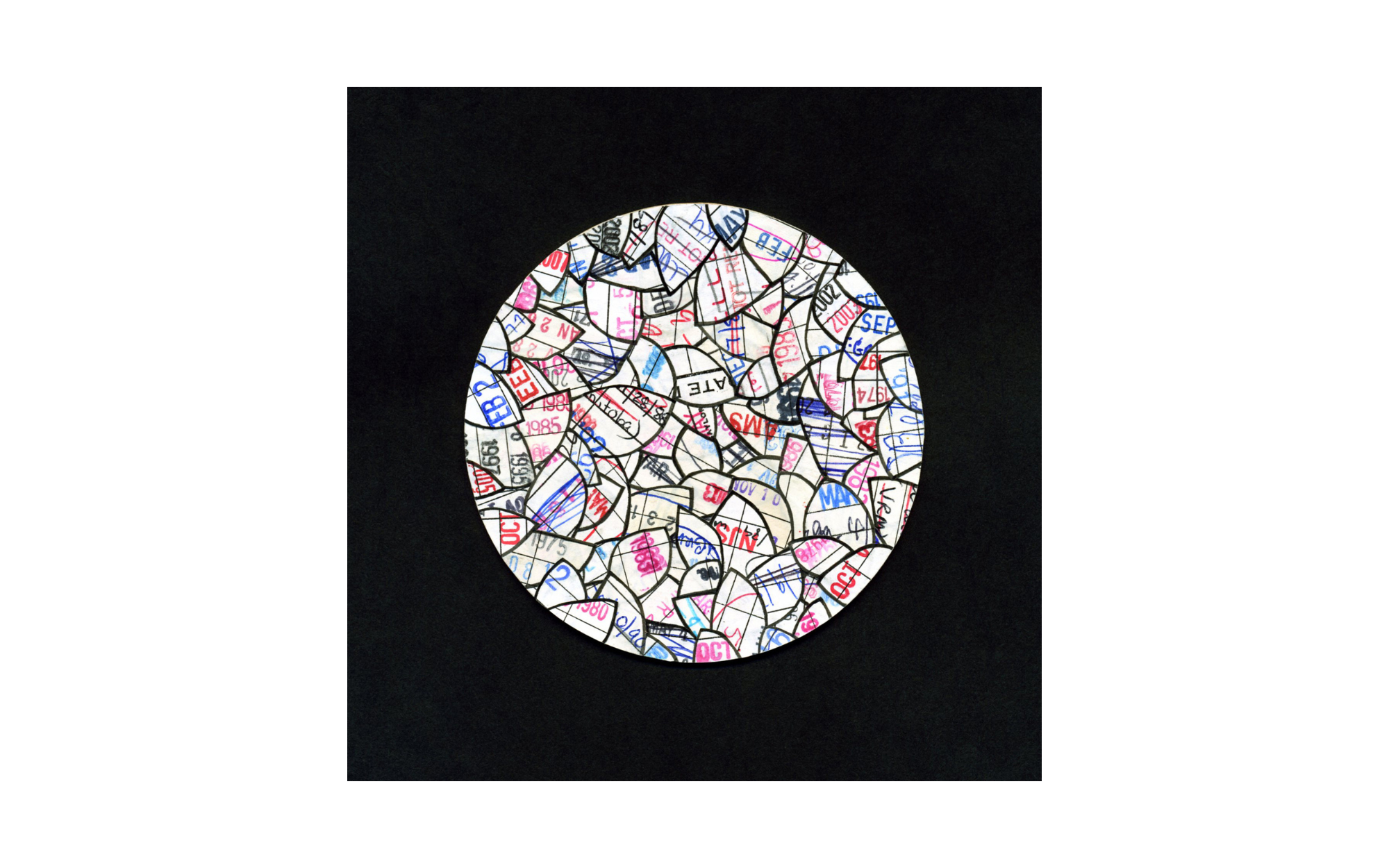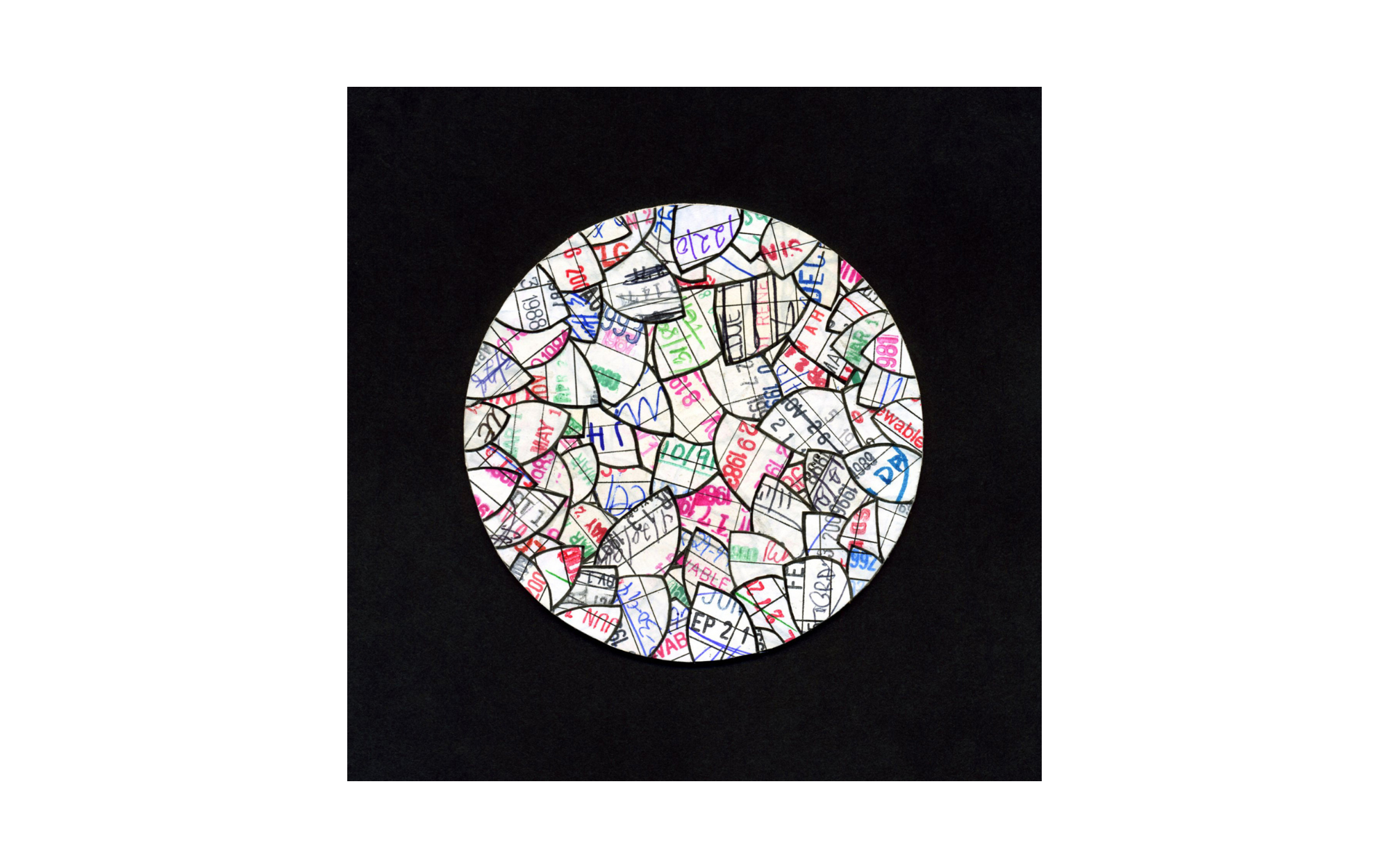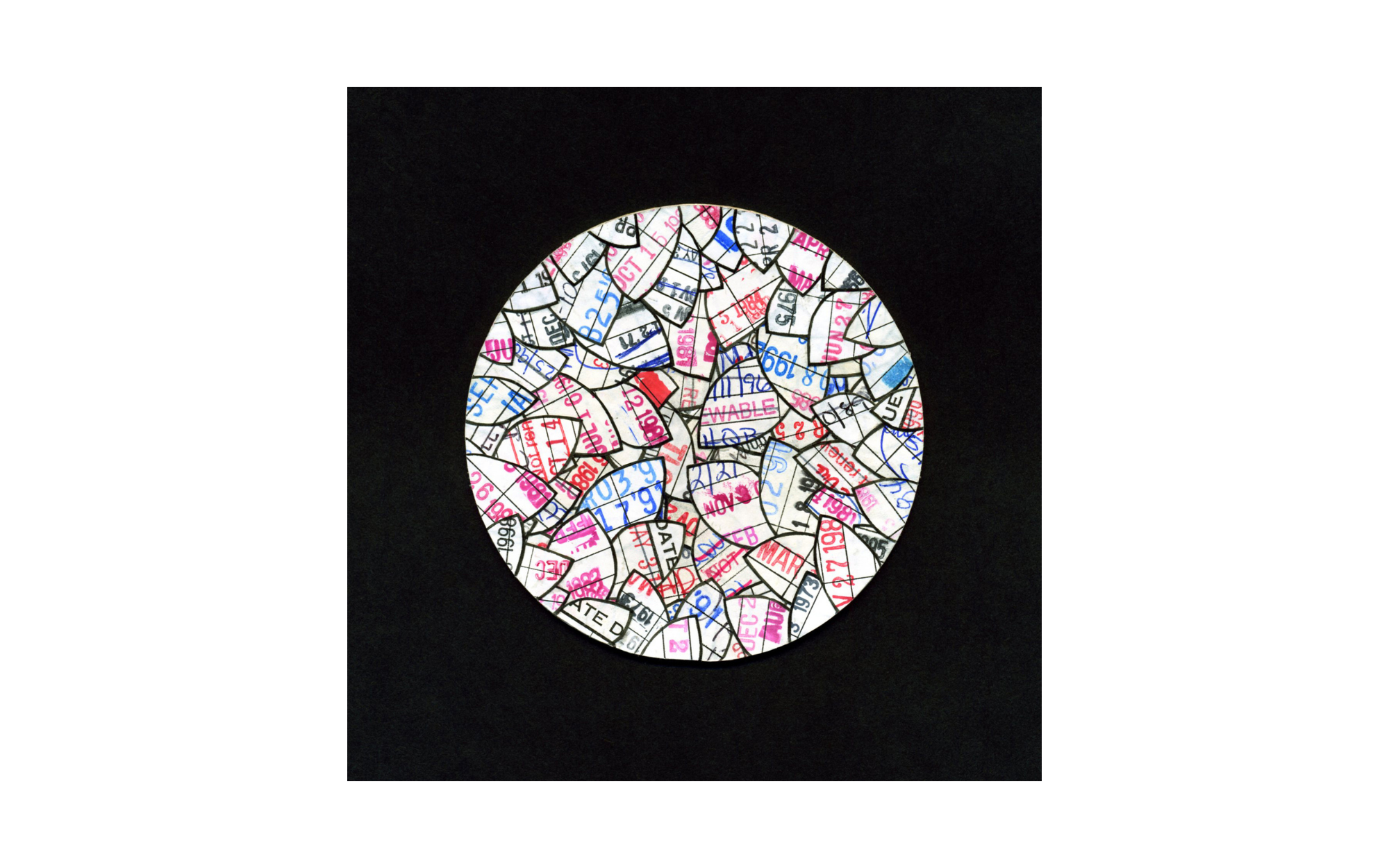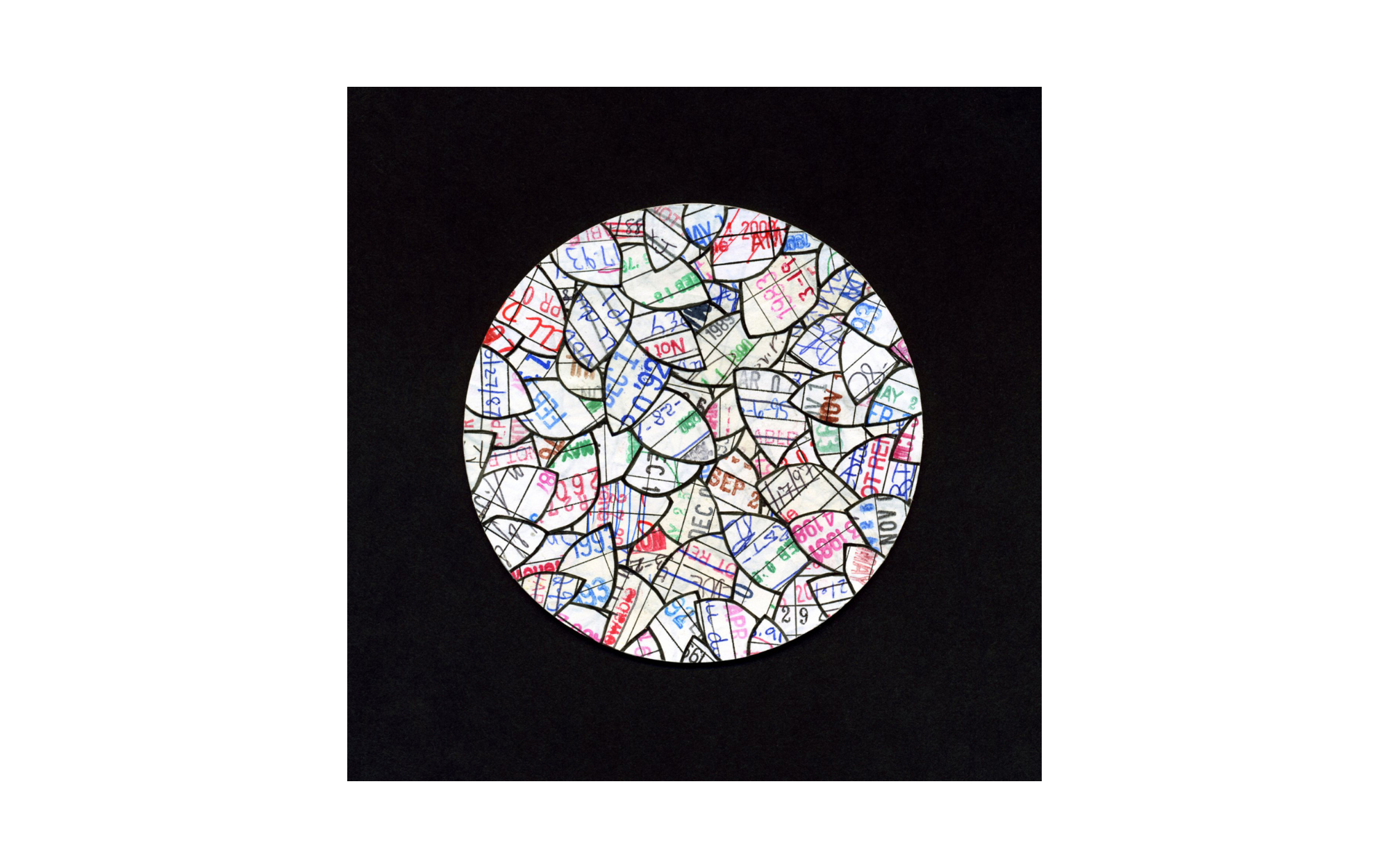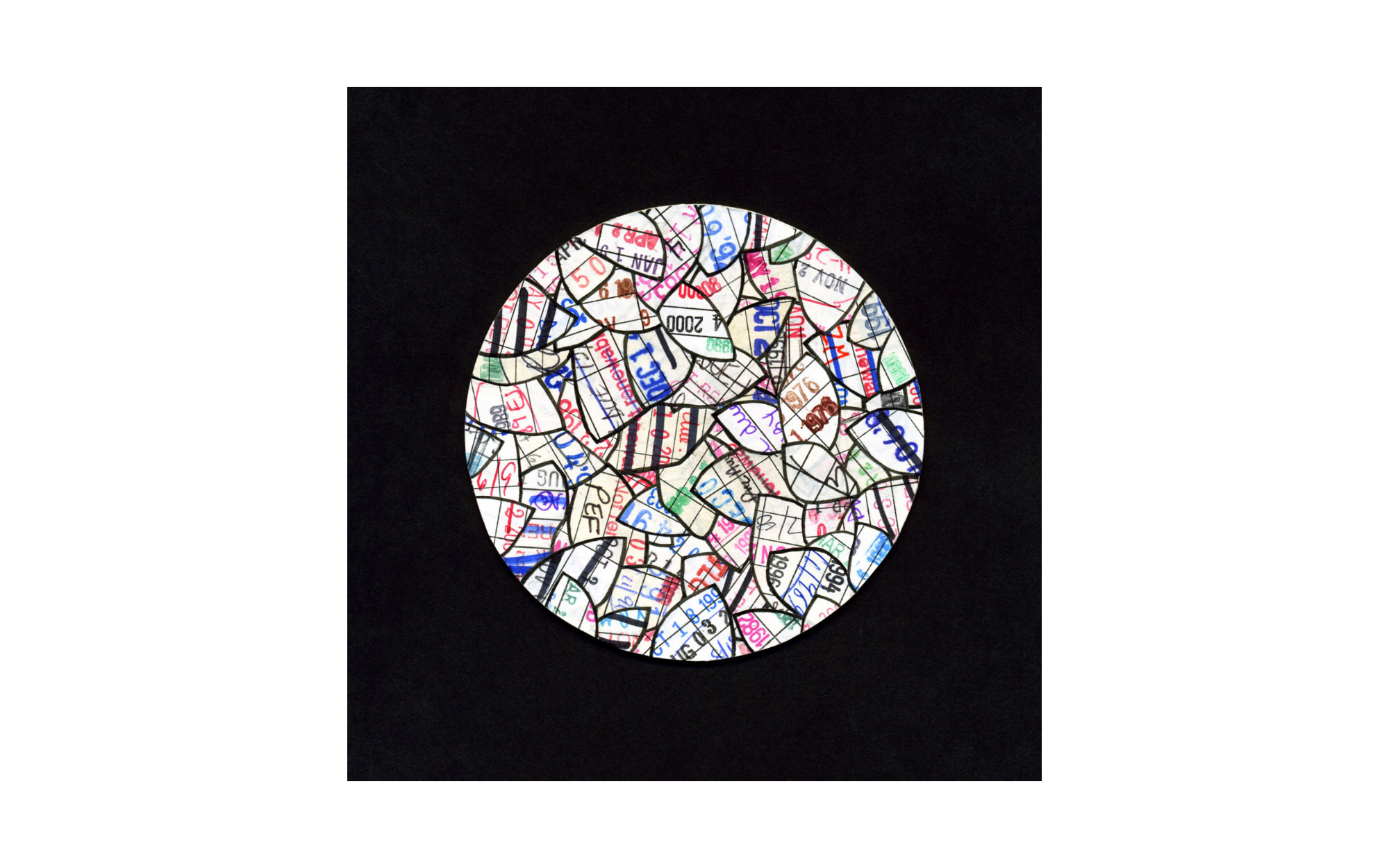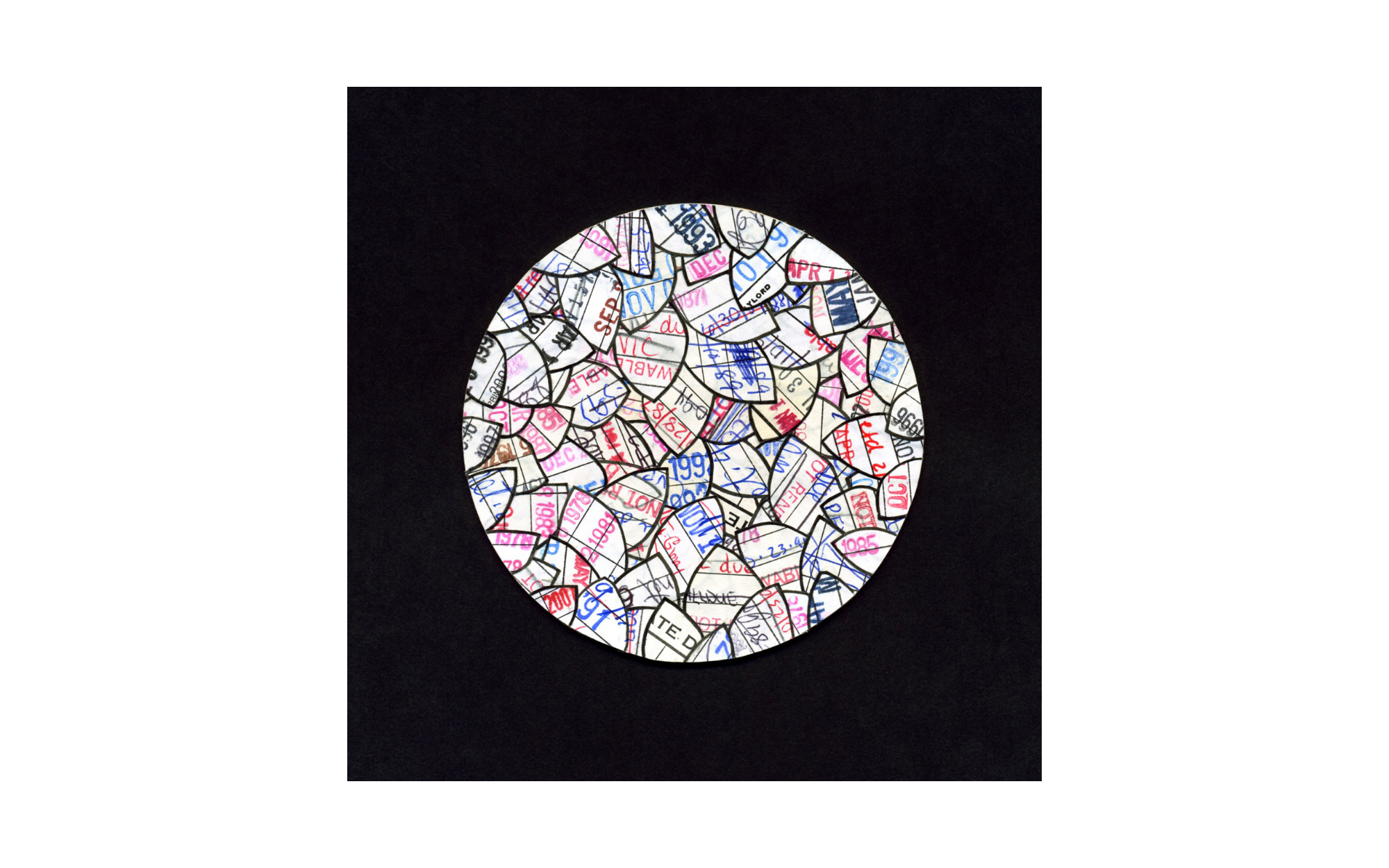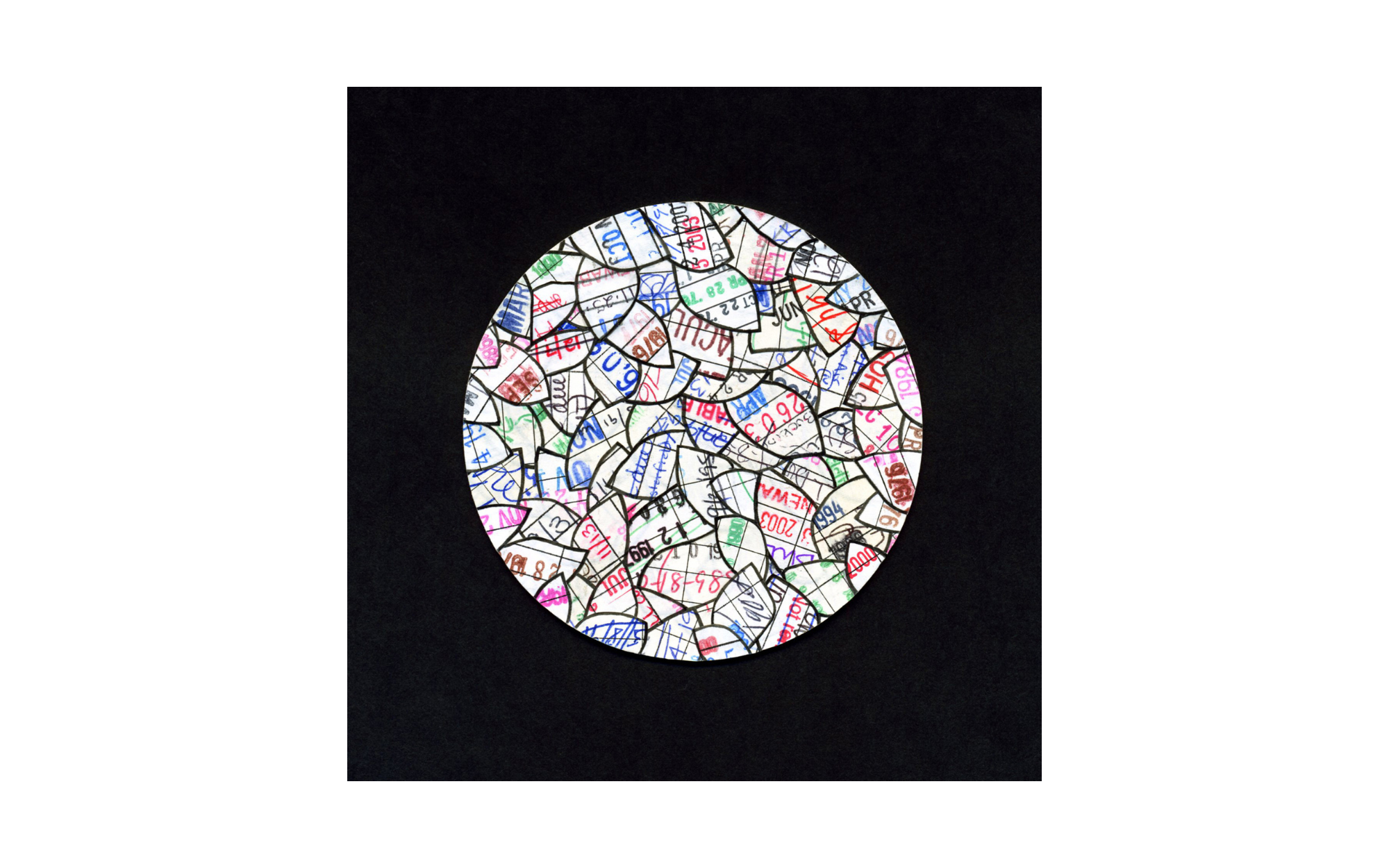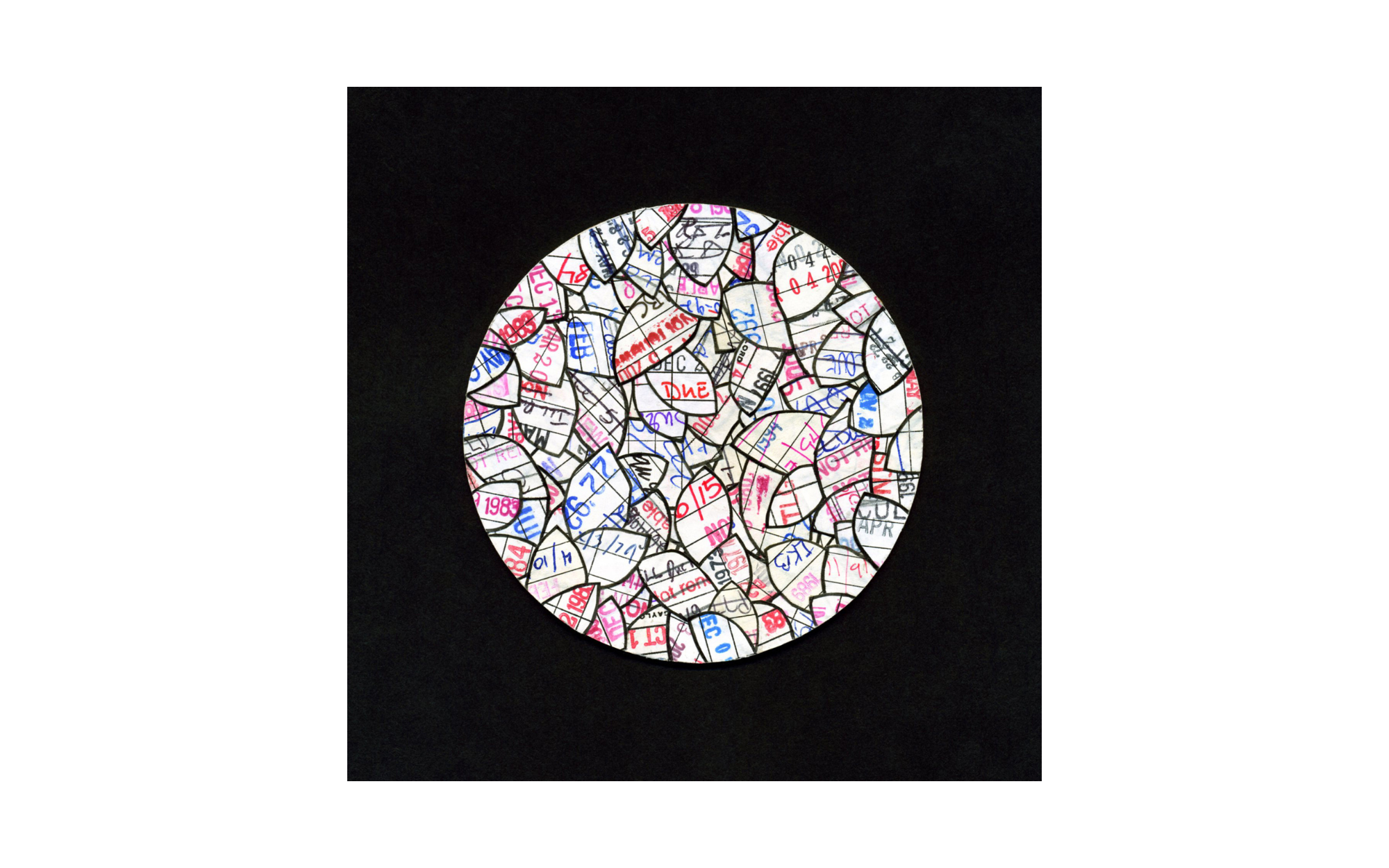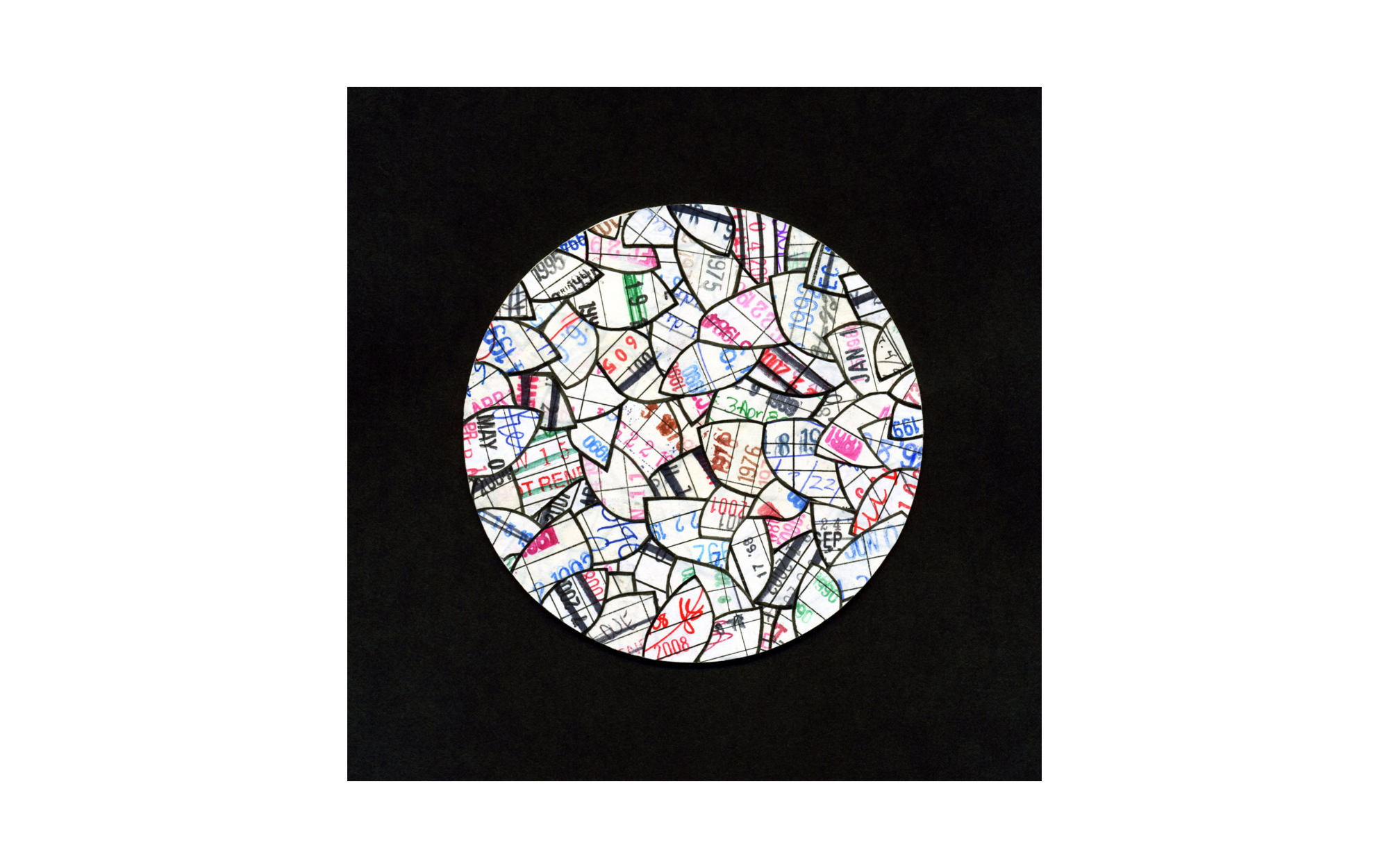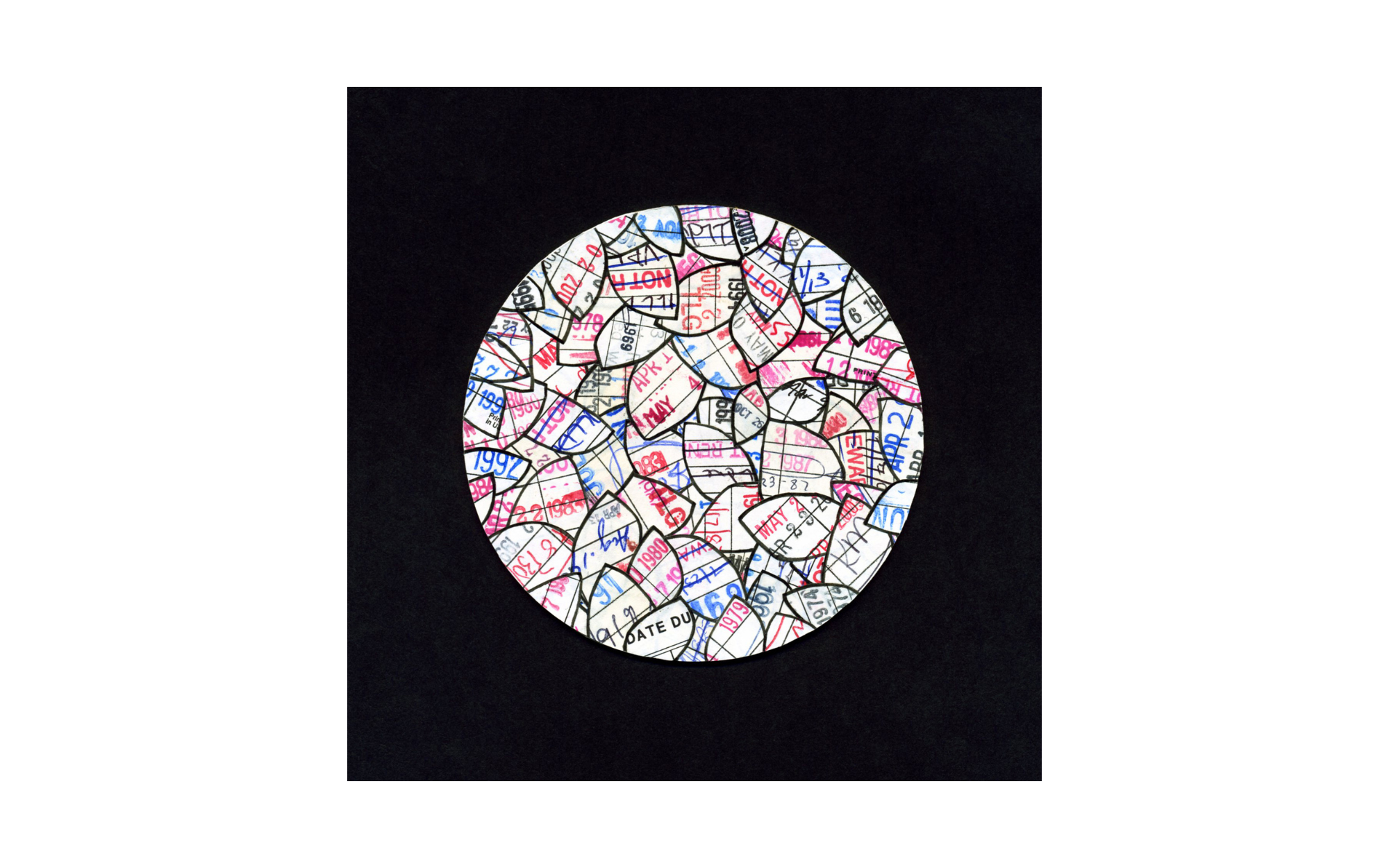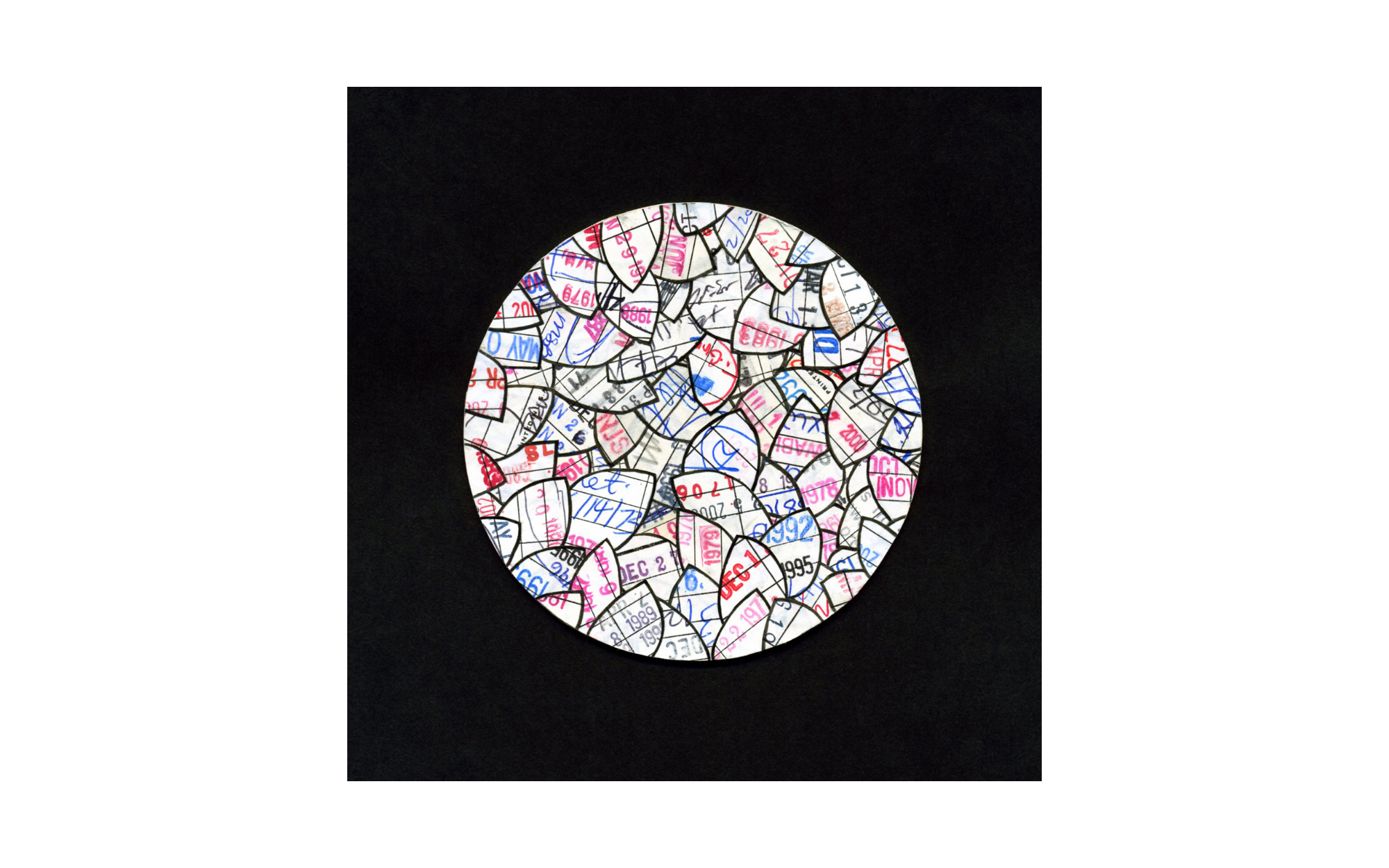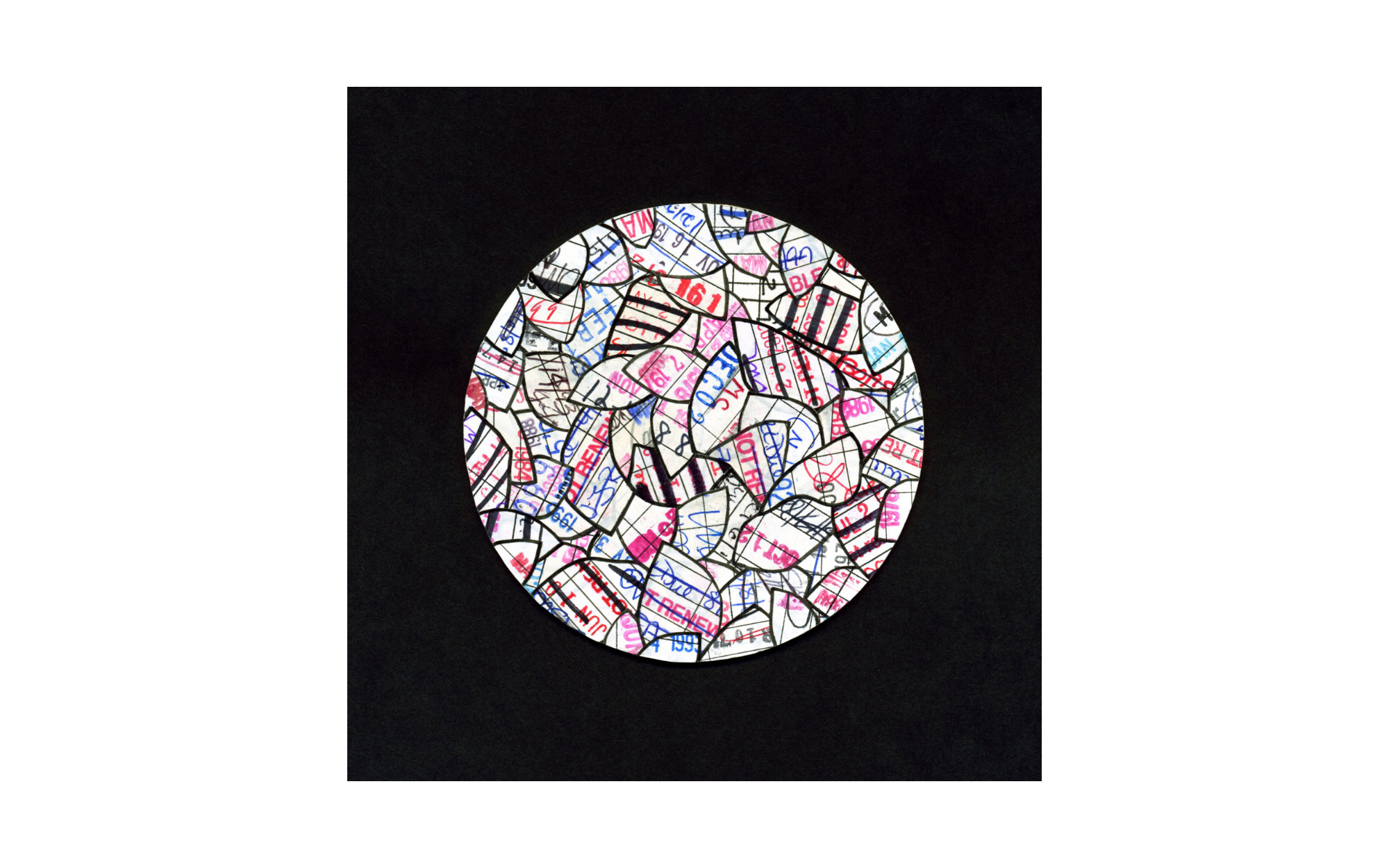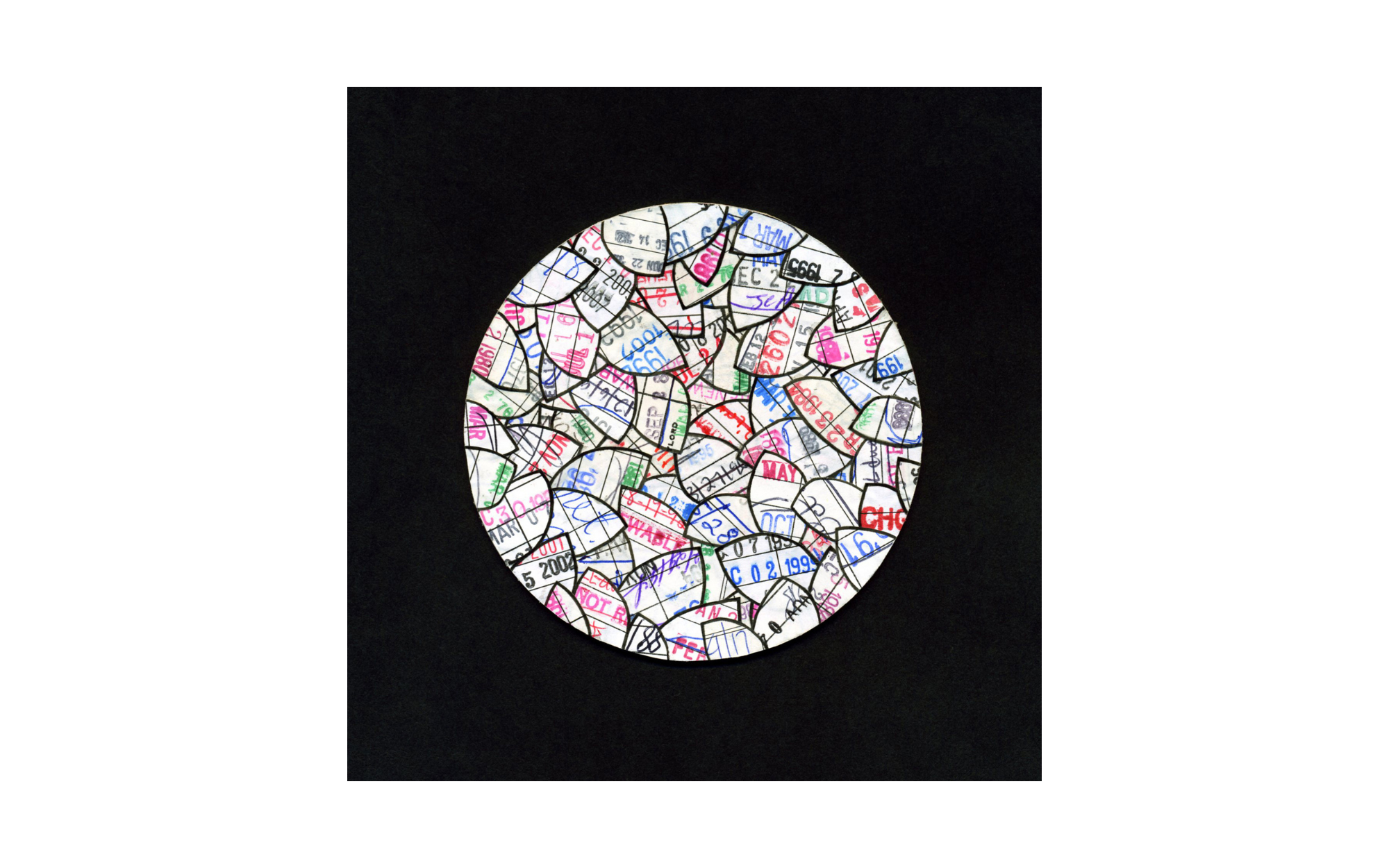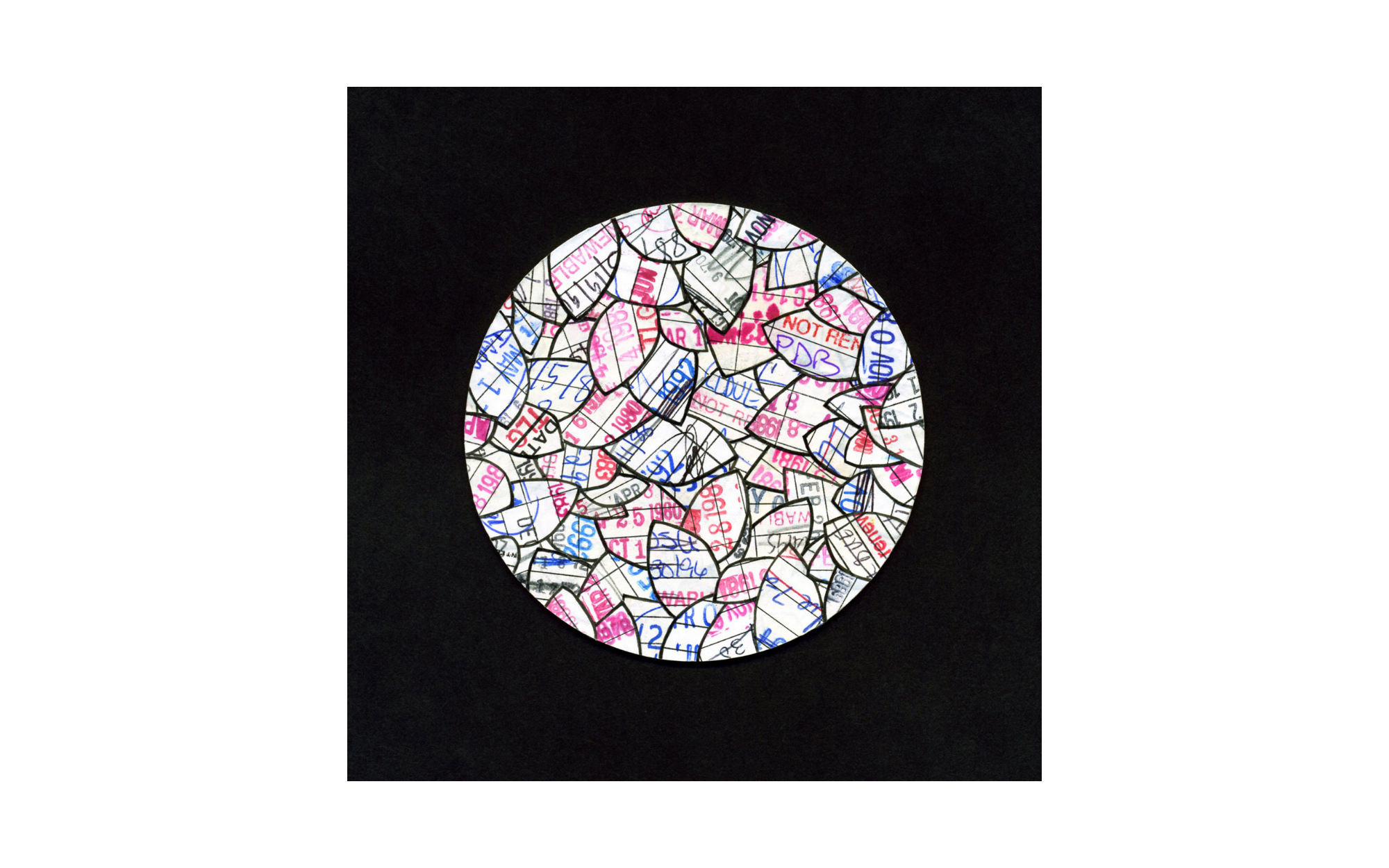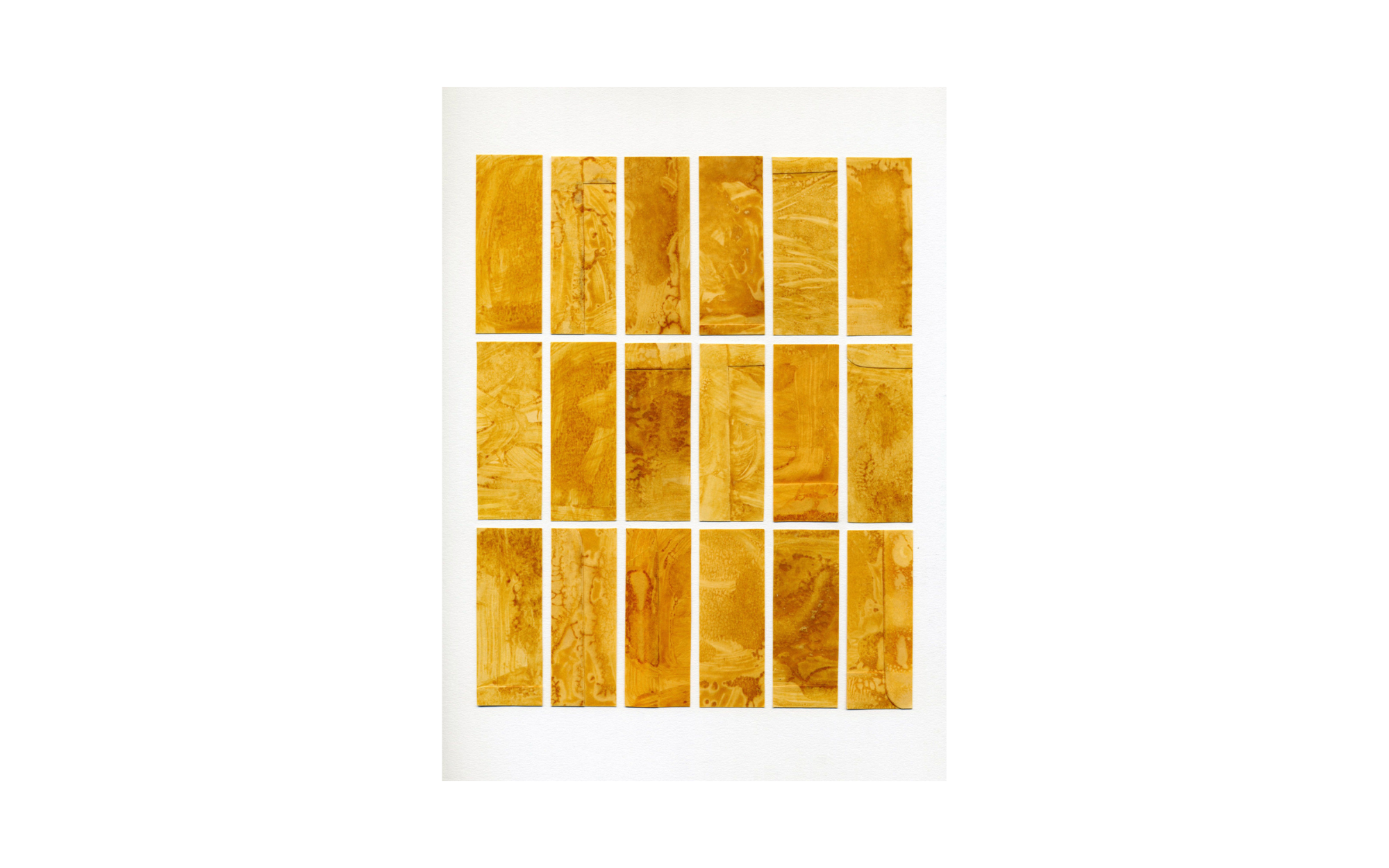jonathan leE
Record works
This series is made from 80 copies of Barry Manilow – Barry, his 7th album released in November of 1980. This was the peak of Manilow’s global reach and his only album to go Platinum in both the US and the UK. There were 35 separate pressings of the record including editions from the US, UK, Germany, Netherlands, Sweden, Spain, Italy, Japan, Singapore/Malaysia/Hong Kong, Canada, Brazil, Greece, Venezuela, Argentina, Australia, New Zealand, Ireland, South Africa, and Mexico. Special editions included Terre Haute, Keel, Monarch, Santa Maria, Sonopress, and various Club Editions. Now, Barry is one of the most common “dollar bin” records I encounter.
Barryer (One)* (2021), 36” x 36” x 1.5” record covers, pva, and paint on wood panel, $3600
*Barryer previously exhibited at the Swope Art Museum in Terre Haute, IN where it won the Susan & George Brittain Award.
Barryer (Two) (2022), 12” x 48” x 1.5” record covers, pva, and paint on wood panel, $1600
Barryer (Three) (2023), 23.75” x 17.75” x .25” record covers, pva, and paint on wood panel, $1200
Barryer (Four) (2023), 9.5” x 11.75” record covers and pva on paper board (framed), $350
Barryer (Five) (2023), 10.75” x 18” record covers and pva on paper board (framed), $600
Barryer (Six) (2023), 7.5” x 9.5” record covers and pva on paper board (framed), $225
Barryer (Seven) (2023), 7.5” x 9.5” record covers and pva on paper board (framed), $225
Congress (Class H – Social Sciences)
The Library of Congress Classification system divides all knowledge into 21 basic classes, each identified by a single letter. Most of these classes are further divided into specific subclasses, primarily identified by two-letter combinations. H is the classification for the Social Sciences, a lens through which to look at the Barryer works.
Congress (Class H – Social Sciences) H, HA, HB, HC, HD, HE, HF, HG, HJ, HM, HN, HQ, HS, HT, HV, HX (2022-23), 9.5” x 9.5” ink, due date slips, and pva on paper board (framed), $275 ($3600 full set)
LIBRARY works
These pieces are made from discarded materials from VCU Libraries featuring marks made between the 1950s to the early 2000s. Generally, libraries work to break down barriers and provide information access for all.
Cords of Vanity (2021), 12.5” x 9.5” card pockets and adhesive on bristol vellum (framed), $350
Figures of Earth (2021), 12.5” x 9.5”, card pockets and adhesive on bristol vellum (framed), $350
These Restless Heads (2021), 12.5” x 9.5”, card pockets and adhesive on bristol vellum (framed), $350
Some Temptation We Resisted (2021), 30.5” x 20.5”, card pockets and adhesive on paper board (framed), $1600
Alvin’s Dry Bones (2021), 12.5" x 9.5" endpapers, card pockets, and adhesive on bristol vellum (framed), $350
Strange Windows (One) (2022), 7.5” x 5.5” library cards, card pockets, and adhesive on bristol vellum (framed), $150
Strange Windows (Two) (2022), 7.5” x 5.5” library cards, card pockets, and adhesive on bristol vellum (framed), $150
Strange Windows (Three) (2022), 7.5” x 5.5” library cards, card pockets, and adhesive on bristol vellum (framed), $150
Strange Windows (Four) (2022), 7.5” x 5.5” library cards, card pockets, and adhesive on bristol vellum (framed), $150
Strange Windows (Five) (2022), 7.5” x 5.5” library cards, card pockets, and adhesive on bristol vellum (framed), SOLD
Strange Windows (Six) (2022), 7.5” x 5.5” library cards, card pockets, and adhesive on bristol vellum (framed), $150
Tiny Tondos (2022) (x6), 7.5” x 5.5” ink, date due slips, and pva on paper board (framed), $150
Jonathan Lee is an artist and librarian living and working in Richmond VA. His work explores ephemeral memory, secret histories, and social constructions, often through abstracting activated materials.
The materials I use are marked by exchanges and interactions of unknown consequence: a decision or gesture, an emotion or undertaking, an action or moment with the potential to trigger another. They each have the power to reveal things about our past, present, and future; not just because of what they are but who we are. By altering the original form and function of these materials, I investigate how information is created, interpreted, and renewed through individuals, communities, and systems. Each work responds to both the materials and the maker; a collection of personal and communal experiences where patterns and connections are both made and broken. These abstractions offer an alternative apparatus for taking in and questioning information.

